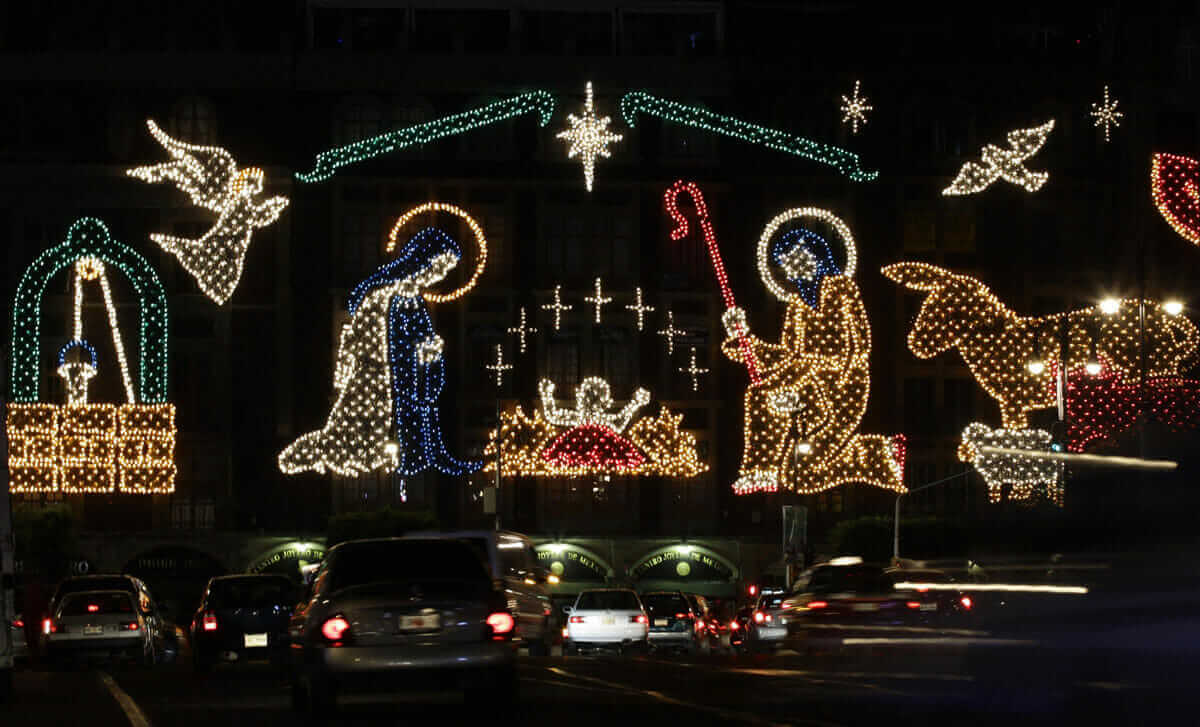Mexico’s Holiday traditions, like much of the rest of the world’s, are strongly rooted in the country’s dominant religion. In Mexico’s case, the onset of the Holiday season begins in early December by honoring Mexico’s Patron Saint, the Virgin of Guadalupe day and continues until early February. Here are the major Mexican Holiday dates and some of the most popular traditions.
December 3: A nine day novena is begun in honor of the Virgin of Guadalupe, or the Mexican Virgin Mary. All over the country, her image is honored and pilgrimages to pay proper respects to this important Mexican saint are begun, ending on her feast day of December 12.
December 12: Virgin of Guadalupe Day. This day celebrates and honors the Virgin of Guadalupe. Young boys will often dress up as Juan Diego and go to church to be blessed, recreating the traditional tale of how the Virgin of Guadalupe appeared to him in 1531 on the hill of Tepeyac, then outside Mexico City.
December 16-24 is the season of Las Posadas, or processions and parties celebrating the season. In its most traditional incarnation, children dressed as Mary and Joseph head out into their neighborhood along with a parade of their friends and neighbors to reenact the religious Christmas story of the pair seeking shelter before the birth of Christ. These processions include singing and candles and, by tradition, the pair is “rejected” at two houses before finally being accepted at the third. More modern interpretations of the posada can simply be as a Christmas party, but all posadas are meant to cement the bonds of family and friendship.
December 24, Christmas Eve. This is the biggest night for holiday celebrations in Mexico. Many attend a late night mass, ending with a midnight feast of dishes like bacalao, turkey or ham, mole and more. Ponche or hot spiced cider, is the traditional drink.
December 25, Christmas Day, is a quieter day of rest and reflection in Mexico, as families spend time together recuperating from the big celebration the night before.
December 28: Los Santos Inocentes (the Sainted Innocents). This is Mexico’s version of April Fool’s Day, originally meant to commemorate the lives of the infant boys killed by King Herod in an effort to avoid the coming of Christ. This day of pranks is also a day in which you can borrow something without having to return it.
New Year’s Eve/New Year’s Day–December 31 and January 1: These are celebrated much as the rest of the world, with a couple of interesting twists. Twelve grapes are quickly consumed at midnight as the clock ticks into the New Year, each representing good luck for each of the coming twelve months. Mexicans also believe that wearing red underwear will bring love in the new year, while wearing yellow underwear will bring money/wealth.
January 6; Three Kings Day: This day celebrates when the Three Wise Men brought their gifts to the Baby Jesus. This is commonly when children will receive a gift. A round fruit bread/cake called a “rosca” is cut into pieces and served–one person will find a tiny plastic Baby Jesus in their piece, which means they will be responsible for making or providing the tamales for the upcoming Candlemas celebration.
February 2-Candlemas celebrates the presentation to the temple of the Christ child. Mexicans will bring their images of Baby Jesus to church to be blessed, and will afterwards share tamales and atole.
This is just a rough outline of some of Mexico’s most popular traditions, rooted in old religious rites, but regional and contemporary changes are common. No matter the differences in Holiday traditions, this time of year is a wonderful, interesting, and colorful time to be in Mexico.






